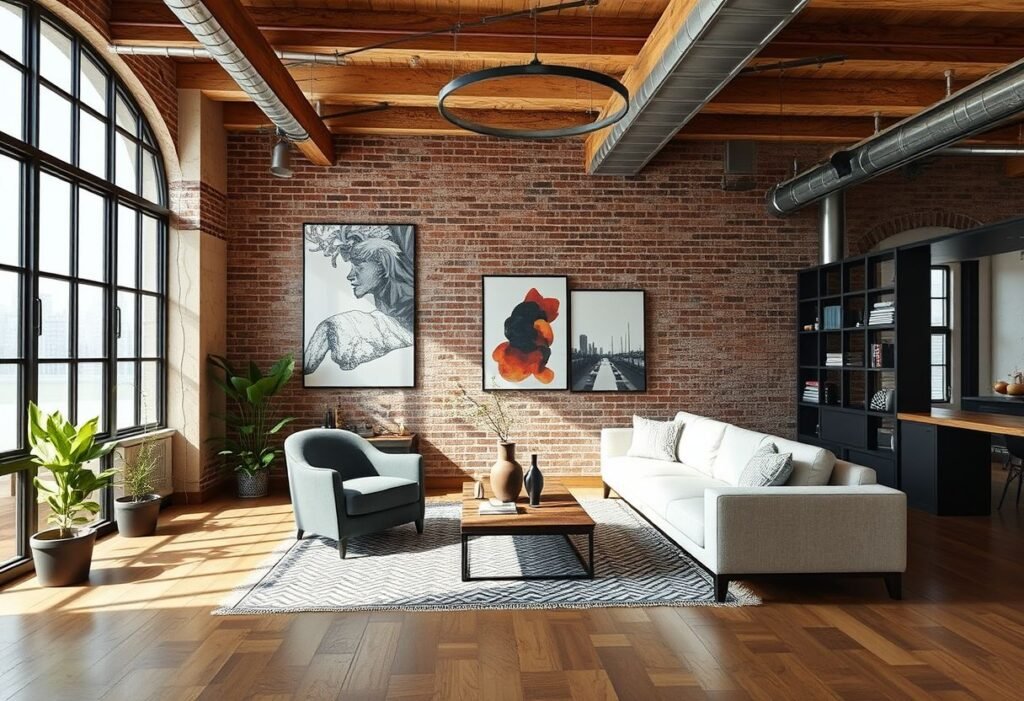Understanding the Essence of Industrial Style
The first step in embracing industrial decor is to grasp its foundational elements. Originating from industrial architecture, this style emphasizes raw materials and open spaces. Start by adopting a minimalist approach—walls should be simple, and colors muted. Exposed bricks, concrete, steel, and wood are key to building your dream atmosphere. Create an open sense of space that allows for free flow while letting each element contribute to a cohesive whole.
The Color Palette and Materials
The color palette in industrial design tends to be sober, dominated by shades of gray, brown, black, and just a hint of white to brighten up the space. However, don’t shy away from bold accents! Vivid touches of colors like red or navy can invigorate the environment and impart character. As for materials, strive to mix various textures. This refers to the smoothness of steel contrasting with the roughness of wood or brick. Such a blend infuses the space with intriguing dynamics.
Functionality of Furniture
Furniture in the industrial style should be predominantly functional and practical. Consider multi-purpose pieces that combine shelving with relaxation areas, like a worktable that doubles as a dining space. Raw wood tables, metal chairs, and open-shelf units are excellent choices. Embrace second-hand furniture—antiques and vintage finds can add character and create unique settings. Don’t forget about the flooring! Exposed wooden planks or concrete floors beautifully complement the industrial look.
Space and Light Integration
Industrial style is characterized by ample space and good access to light. For this reason, windows are one of the most critical elements of this aesthetic. Replace heavy drapes with light sheer curtains that allow natural light to flood in. Incorporate multiple light sources to highlight the rawness and geometric shapes. Loft-style fixtures, hanging metal bulbs, and spotlights will perfectly round out the design. Crafting the right lighting is essential for creating the desired atmosphere.
Accent Pieces and Decor
While industrial style leans heavily on raw materials, it doesn’t mean that decor is off the table. Accent pieces can significantly influence the overall aesthetic. Consider introducing greenery! Houseplants breathe life and warmth into a space, contrasting beautifully with the cool industrial vibe. Investing in art is also worthwhile. Pictures, posters, and graphics with a retro flair can become focal points of your interiors. Remember to maintain balance and avoid overwhelming the space.
Final Touches
Finally, make last-minute enhancements that finalize your industrial vision. Ensure that every element reflects your personal style. Explore local artists and unique handmade items that add character and individuality to your space. Don’t hesitate to experiment! Industrial style offers a vast playground for creativity and a means to craft one-of-a-kind environments.
Conclusion
Integrating industrial style into your home decor is not just a trend; it’s a way to express yourself. Utilizing raw materials, functional furniture, and the right lighting will ensure your space develops a unique personality. I encourage you to explore this style and bring it into your own spaces—it’s an exciting adventure filled with creativity and personal expression.
Disclaimer
This article is for informational purposes only and does not constitute professional advice. Each arrangement should be tailored to individual needs and preferences.

















